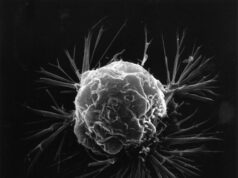By Zsarlene B. Chua
EXERCISE is Medicine (EIM) is a global health initiative spearheaded by the American College of Sports Medicine (ACSM) in 2007 aiming to “have every patient receive counselling and referral around exercise,” said Nicole R. Keith, associate professor of Kinesiology at the Indiana University school of medicine. The organization believes that exercise — or the lack thereof — is “a major risk factor for chronic diseases such as coronary heart disease, type II diabetes and several cancers” according to the EIM Web site.
The movement aims to have primary care physicians to ask their patients about their physical activity vital signs — or how active their daily life is: how much exercise are they getting or not getting, and based on the results they will be referred to a fitness professional or an EIM resource “to help them meet the guidelines.”

These guidelines are specific for each person and would take into account their general health condition (which includes the diseases they might have) and make an exercise plan according to the needs of the individual, said Ms. Keith, who spoke with BusinessWorld on Sept. 4 at La Cabrera Restaurant in Makati.
The goal of the whole program is to promote the belief that “physical activity is integral in the prevention and treatments of diseases and should be regularly assessed and ‘treated’ as part of all healthcare,” according to their Web site.
Ms. Keith has noted that the progress of EIM has been “slow” but that they’ve learned a lot since they’ve started.
“We had this model of how we thought it was going to work: that the primary care physicians would say ‘oh, you should exercise’ and refer, and then the patient would go to the place with the EIM professional and start to exercise — but we realized the patient needs help [as] there’s so many challenges to get from the physician to the exercise,” she said, adding that some of the hindrances include time, knowledge, financial resources, and general comfort.
To that end, they’ve recommended that primary care physicians have some kind of assistant who can help the patient go from point A to point B.
“This can be a doctor’s assistant, etc… even a call center operator,” she said as they’ve acknowledged that technology would greatly help their cause, something that the Philippines can imitate.
“It’s possible for the Philippines to make the same kinds of adjustments and, quite honestly, if there becomes a technology solution, as long as there’s web access or phone access even, it can be addressed,” Ms. Keith said.
EIM IN THE PHILIPPINES
EIM has been in the country since 2010, according to Angie D. Miles, scientific and regulatory affairs director of Coca-Cola Philippines in the same interview.
“It took time for the Philippines to form its own EIM Philippines,” she noted, but Ms. Keith described the movement in the Philippines as “strong” despite its slow start.
“I am amazed and really excited because they were really organized… what we encourage every country to do is… [for the referral and counseling] to be consistent,” she said, acknowledging the fact that the process might be different from country to country, but as long as the main objective is accomplished, it’s all up to the country how they manage it.
EIM is currently in 43 countries including Myanmar, Vietnam, Singapore, Malaysia and Thailand in South East Asia.
During an EIM conference held a day before the interview, Ms. Miles reported that they had 60 people (mostly dieticians) who signed up for training which takes one to a day and a half day maximum.
“For Coke, we help propagating the advocacy… because we share the same advocacy in exercise and promoting physical activity,” Ms. Miles said of Coca-Cola’s involvement with the global initiative.
The American soda company, in recent years, has championed the cause of promoting physical activity to maintain health — a cause which some say is meant to divert attention from soda as the cause of obesity, to obesity caused by not enough exercise.

“It’s very clear that around the world the populations are getting fatter,” said Steve Blair, an exercise scientist affiliated with the [Coca-Cola] group. “The big problem is we don’t really know the cause other than, well, too many people are eating more calories than they burn on too many days,” he was quoted in an article by Alice Griswold on Slate.com.
According to the sustainability report the company has published in its Web site, it has agreed “with the widespread consensus that weight gain is primarily the result of energy imbalance — too many calories consumed and too few expended. No single food or beverage alone is responsible for people being overweight or obese. But all calories count, regardless of the source — including those in our beverages.”
The New York Times on Aug. 9 reported that the company donated $1.5 million to help start Global Energy Balance Network, a non-profit organization promoting physical activity to combat obesity and other health problems and “provided close to $4 million in funding for various projects to two of the organization’s founding members: Dr. Blair, a professor at the University of South Carolina whose research over the past 25 years has formed much of the basis of federal guidelines on physical activity, and Gregory A. Hand, dean of the West Virginia University School of Public Health.”
“[The advocacy] deflects attention from what really counts in obesity prevention: not eating huge amounts of junk foods, snack foods, and sodas,” said Marion Nestle, New York University Nutrition professor in an article by Kerry Trueman published by civileats.com.



